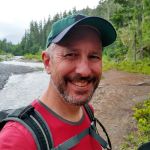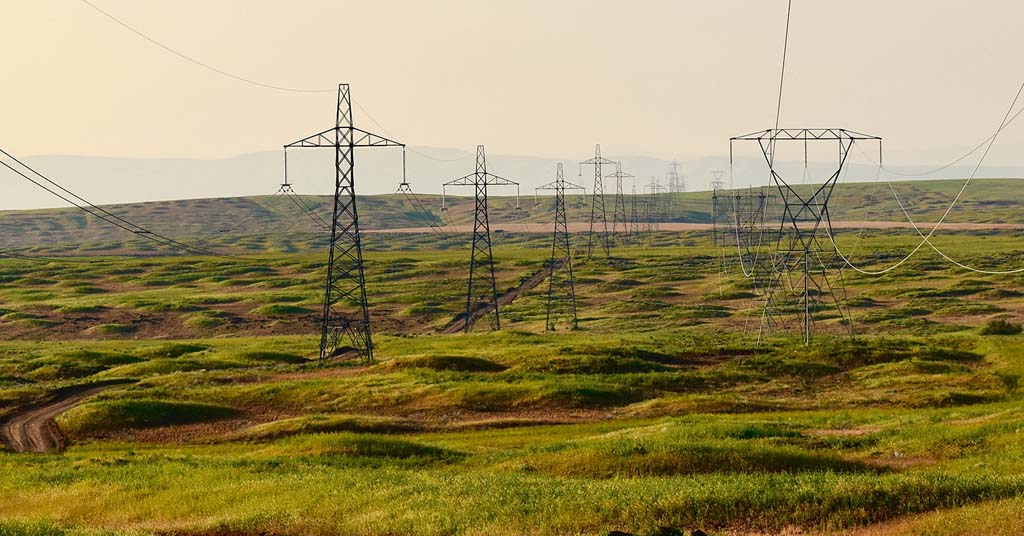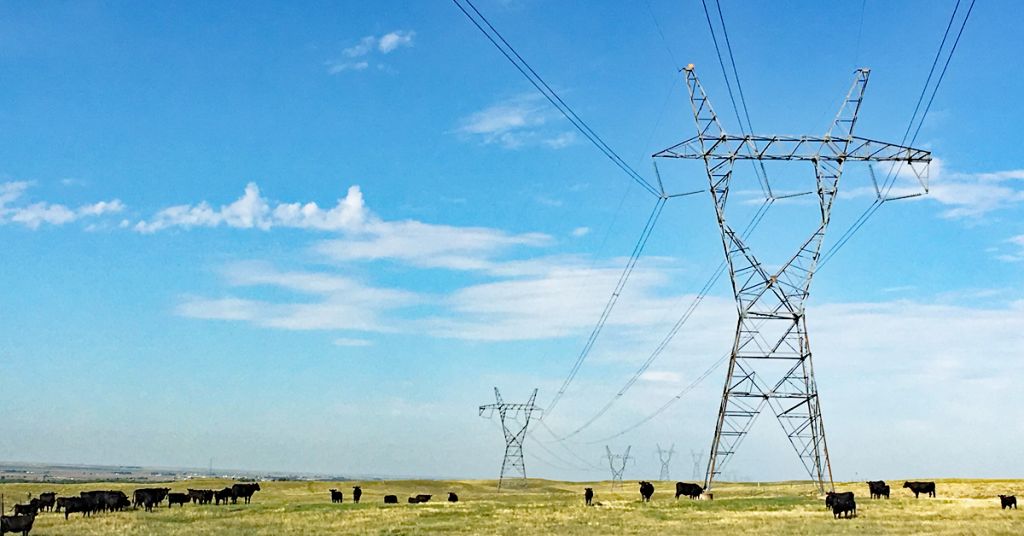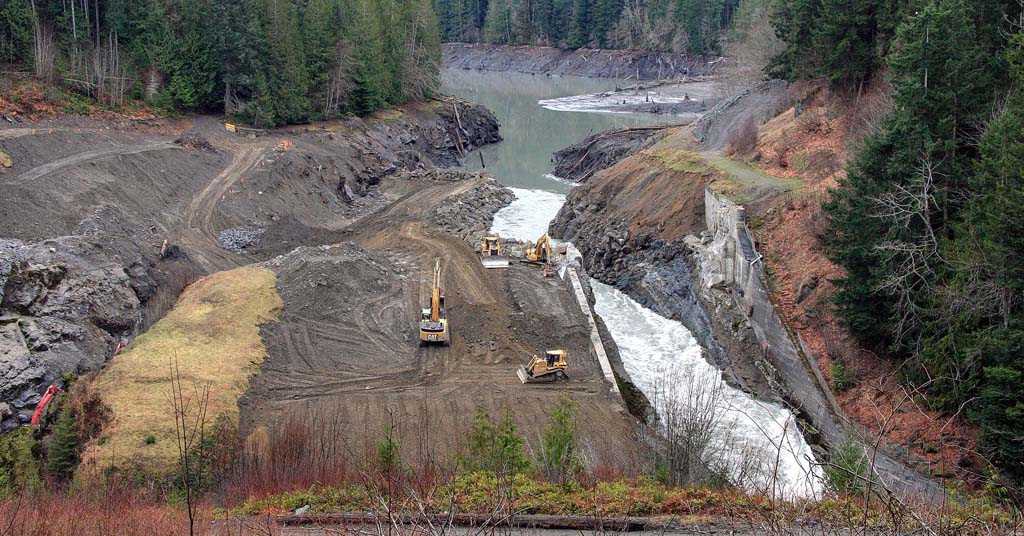As the BPA seeks to expand its network of transmission lines, an Oregon salmon stream serves as an example of what can be done without herbicides
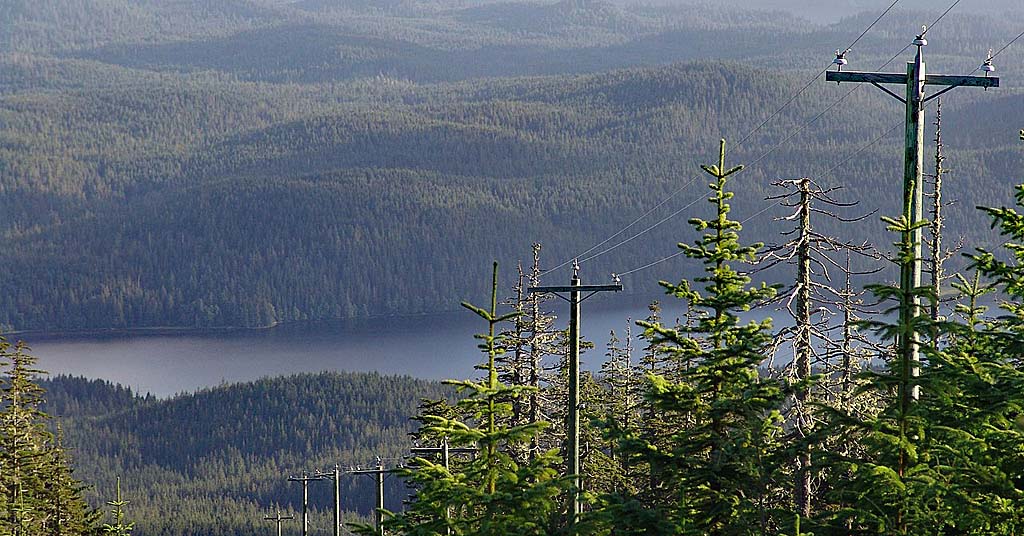
More power to you: Maintaining transmission line right of ways while keeping landscapes healthy is a challenge across the Pacific Northwest. Photo: tasugringo/Wikimedia Commons
By Andrew Engelson. October 31, 2024. When Chuck Gehling discovered that herbicides were destroying a unique salmon and beaver habitat in the headwaters of Oregon’s West Fork Hood River, he tried to find an alternative.
Gehling, who worked as a fisheries technician for the Confederated Tribes of the Warm Springs, proposed to the Bonneville Power Administration (BPA) to assemble a crew that would manually trim vegetation underneath BPA’s transmission lines near Lolo Pass, north of Mount Hood.
Previously, BPA crews of about 20 would come through and selectively spray herbicides to keep trees and vegetation from growing too close to the high-voltage power lines—in an area that’s prime spawning habitat for steelhead and chinook salmon.
Gehling convinced BPA to let his crew use hand tools to trim native vegetation and remove invasive weeds.
Though the project went on for about a decade until 2017, resources dried up, Gehling retired and now BPA crews are back with an assortment of tools in their toolkit—including herbicides.
As demand for electric power increases in the Pacific Northwest—driven by the search for more sustainable energy sources—BPA and other power providers are making ambitious plans to expand the region’s transmission network.
But that’s also raising persistent questions about how to maintain the vegetation that grows underneath these lines in order to prevent power outages and reduce wildfire risk.
“If you have tall, fast-growing vegetation that can come in contact with the line or close enough to cause an arc-over,” says Kevin Wingert, spokesman for BPA, “then you’ll have a liability issue if something happens—a storm or some sort of other disruptive activity on the line. And if it’s overgrown with tons of vegetation, that makes it difficult for transmission field crews to get in to do emergency work and restore the power, or do maintenance work.”
Herbicides meet salmon
In mid-October, BPA announced an ambitious $3 billion plan to expand its transmission network with 13 new substations and line upgrades throughout the Pacific Northwest. The new capabilities will allow the federal power utility to carry thousands additional megawatts of electricity, including some sourced from new wind and solar projects.
On top of another expansion plan announced in 2023, BPA is currently working on more than 20 capacity-building projects totaling $5 billion.
To prevent power outages and reduce the increasingly dangerous risks of sparking wildfires, in 2000 BPA created a vegetation management program for its power transmission corridors.
The goal, in general, is to promote low-growing, native vegetation such as alders and willows while preventing the growth of large conifers such as Douglas fir and Western red cedar, as well as invasive weeds.
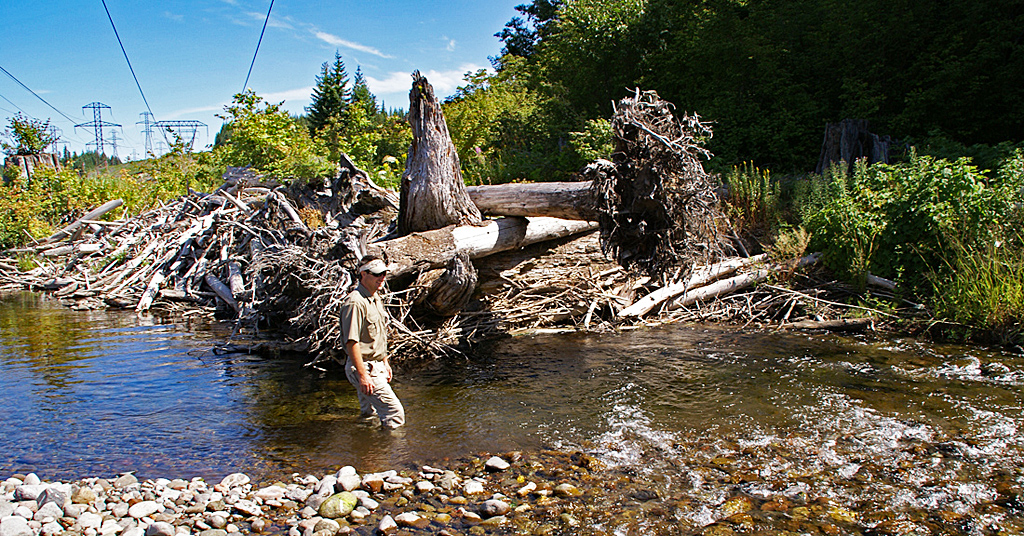
Line of sight: Blayne Eineichner, fish habitat program coordinator for the Confederated Tribes of Warm Springs inspects conditions beneath power lines on the West Fork Hood River in 2010. Photo: Jurgen Hess
The program outlined various strategies, including manual cutting, mechanical removal and EPA-approved herbicides.
“We do a lot of spot and localized treatment with herbicides,” says BPA natural resource specialist Eric McOmie. “We’re not just out there will-nilly, broadcast spraying or aerial spraying. That’s not even covered in our EIS.”
BPA officials say they’re mindful of impacts, and work to ensure spawning habitats aren’t negatively impacted and cooperate with partners such as the U.S. Forest Service and Tribes to ensure listed species are protected.
But in the early 2000s, Gehling saw what he called one of the most productive areas for salmon in the West Fork watershed damaged by BPA: “They came through and sprayed all that. The willows, which were the main food for the beaver, that all died. I mean, it was like it was decimated, and it was pretty sickening.”
Manual solution
Gehling, who’s also been involved as a volunteer with the Hood River Watershed Group since its inception in the early 1990s, was at the time working for the the Confederated Tribes of the Warm Springs to help acclimate hatchery fish to their new surroundings.
Gehling often returned to this spot, where two creeks converge to form the West Fork Hood River. It was here, at about 3,000 feet of elevation, that the creek was less steep than downstream, and full of abundant gravels.
The creek runs through a private inholding of about 1,500 acres, surrounded by Forest Service land, and owned by a timber company, which had granted an easement to BPA. Previously, beaver had constructed a network of dams and the braided streams were well shaded by native willow and alder.
“The beaver had been in there,” says Gehling, “and it was actually really quite difficult to cross because they had built ponds and so there were these wetlands, and multiple channels of the river. It was just beautiful habitat.”
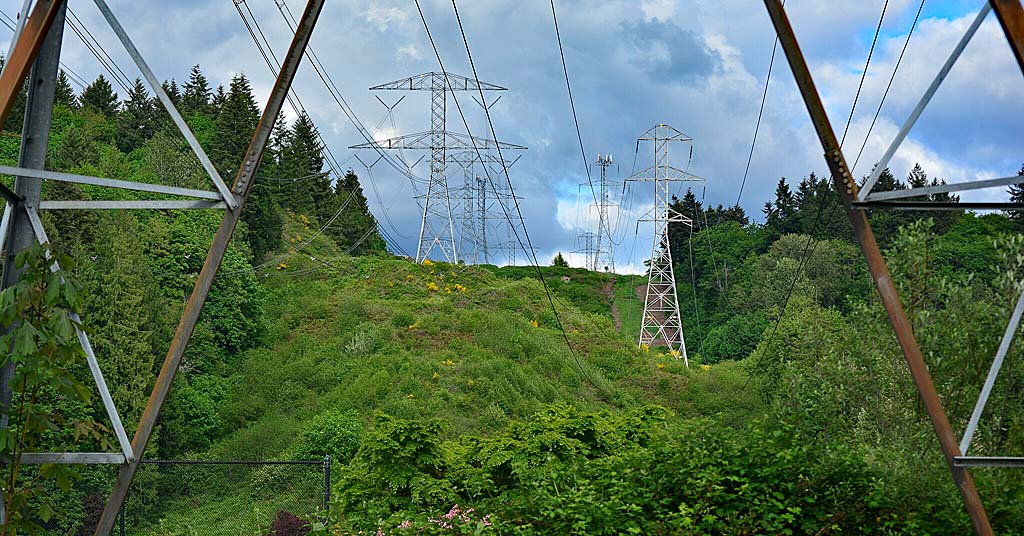
Space invaders: Power transmission lines along the Green River near Auburn, Wash. Photo: Joe Mabel/Wikimedia Commons
After the beaver were gone and the dams fell apart, Gehling approached the BPA vegetation manager about a different approach, and a handshake agreement led to his leading a crew of three to four to manually maintain a 20-acre stretch of the river underneath BPA’s lines.
“They said if, along the stream edges, we kept the vegetation down to six or eight feet, that would be okay, and they wouldn’t spray it,” says Gehling.
His crew, which included an AmeriCorps volunteer, trimmed with hand tools such as loppers, and chainsaws. The crew also pulled out Scotch broom, a particularly flammable invasive weed.
“It was a heck of a lot of work,” says Gehling.
Gehling’s efforts were done in conjunction with a Confederated Tribes of the Warm Springs-funded habitat restoration effort under the BPA line and further downstream on the West Fork that placed about 200 large, downed logs into the river to slow it down and create better spawning habitat.
Though the beaver never returned, Gehling is proud of his efforts, and even today, eight years after the project “sort of petered out,” he says, the results are still evident.
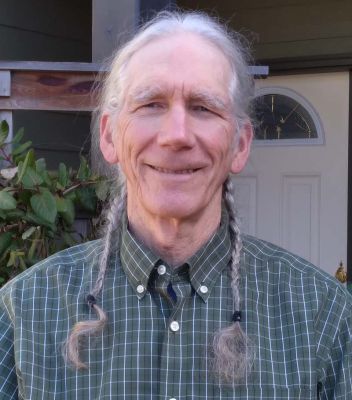
Chuck Gehling. Photo: Used by permission
“On the other side from where we did the work it was dead brown. But where we had worked, it was lush green, and it was beautiful,” he says. “I always felt really proud about that.”
One option still in the BPA’s toolkit, says McOmie, is spot treatment with herbicides, primarily Garlon 3-A, an EPA-approved herbicide sometimes used for highway treatments, with the primary ingredient triclopyr.
McOmie notes that the BPA adopts a buffer of about three to six feet from the waterline when spot-applying these herbicides, particularly to large conifer stumps and invasives.
According to the EIS, “we can’t treat a certain watershed more than 1% of the total length,” he says.
McOmie says BPA managers are currently in conversation with the Warm Springs Tribes about what’s next for the area and his team is looking at various options: “Hopefully, we’d like a memorandum of understanding between the two agencies for them to continue conducting that work with their staff.”
The Confederated Tribes of the Warm Springs didn’t respond to a request for comment for this article.
Gehling says the the Hood River Watershed Group, of which he is board chair, received a six-year, $11 million grant to improve the Hood River watershed, and he hopes this small corner of it under BPA lines can continue to be restored.
“It was just one small thing,” he says. “I can’t say for certain we did a lot of improvement for that area, but the cooperation was great, and it did look good for a while.”



